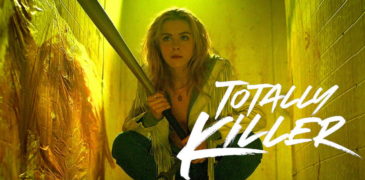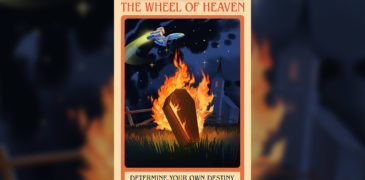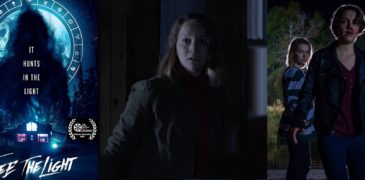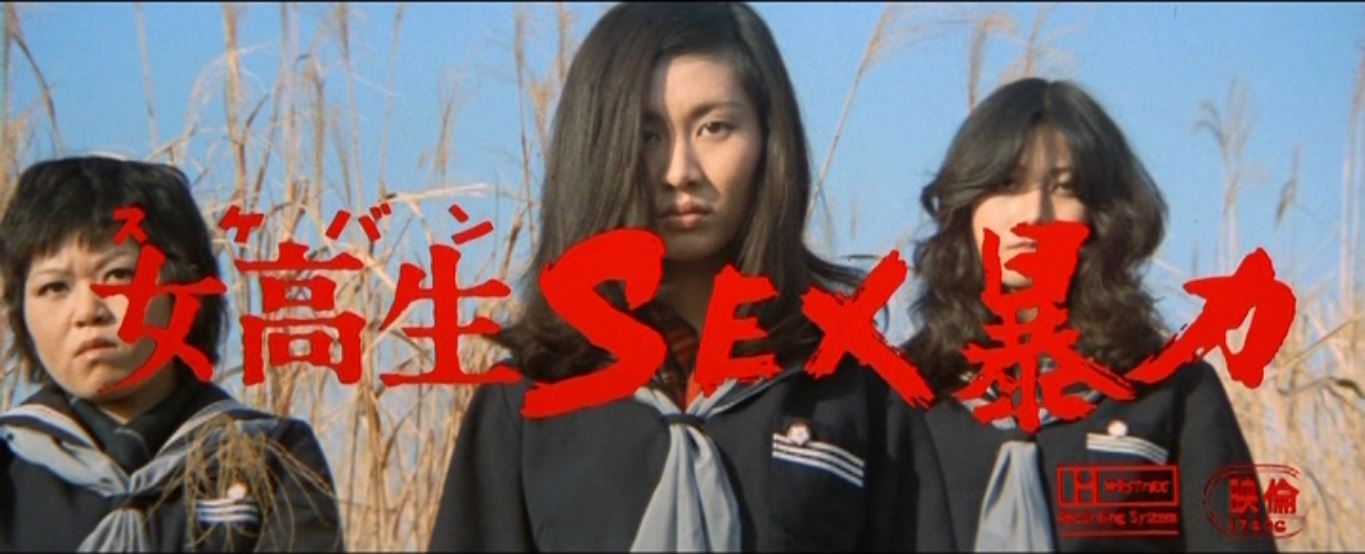
After helping to kickstart sukeban cinema in 1970, Nikkatsu would largely retire from the genre in 1971 after the lacklustre performance of “Bad Girl Mako”, leaving Toei unchallenged in their pinky violence dominance. However, in 1973, a fresh entry would come courtesy of the small studio Purima Kikaku. Purima Kikaku would exclusively make low-budget porn films which would be distributed by Nikkatsu, although they occupied a very unique niche in the market. A large number of their films would be labeled as “document porno”- essentially gonzo mockumentaries designed to not only slash the budget of production but also add an air of legitimacy to proceedings in order to increase the sense of scandal amongst viewers. These films would have very loose scripts and the “plot” would be led via a narrator further pushing the documentary style. As a final attempt to sell the illusion, amateur actresses would be employed so that no acting credits were required.
In July 1972, author Daisuke Maehara would publish the book “Highschool Boss Sukeban“. The book would consist of various interviews and observations of real-life sukebans which mainly focused on sexual aspects (the extended title would be “Actual Situation of Sex and Misconduct of High School Girls“), but there is no doubt the legitimacy of these anonymous interviews would be questionable to say the least. This book would help shift the focus of sukeban media away from the typical depiction of 18 to early 20-year-old street grifters and onto high school girls, going on to sell over 400000 copies and receive numerous follow-ups throughout the decade.
The popularity of Toei’s pinky violence films mixed with Maehara’s books meant it would be the perfect subject for Purima Kikaku to tackle with their Document Porno line. “Document Porno: Sukeban” was released by Nikkatsu in January 1973 and proved incredibly popular, so much so that a follow-up was released just two months later. The sukeban genre was perfectly matched to this style; whilst the average person would probably never directly encounter the yakuza primarily shown in crime thrillers, there was always the chance that there could be a sukeban gang in their neighbourhood. Additionally, the fact is that in popular media at the time, most female delinquents were shown as sexually aggressive, promiscuous subjects and you would thus have the ideal recipe for many a late-night fantasy amongst the middle-aged male target audience.
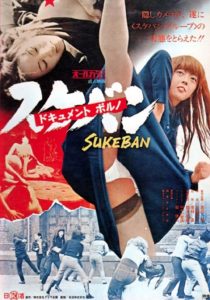
In reaction to the popularity of this film, Nikkatsu would decide to re-enter the sukeban genre with “Sukeban SEX Violence“, released in March 1973 to be exact. Whilst not copying the documentary style of Purima Kikaku, this film would be far more realistic than any of Toei’s somewhat cartoonish offerings. Straight out of the bag, the film would garner controversy. Despite being referred to as “Sukeban SEX Violence“, Nikkatsu would use “sukeban” as the furigana definition of “jokosei” (schoolgirl) so that on posters the title would appear as “Schoolgirl SEX Violence“. Nikkatsu along with Eirin (the Japanese film rating organisation) would actually be taken to court charged with distributing obscene material under their Roman Porno series, with a lot of the focus centring around the depictions of schoolgirls in such films.
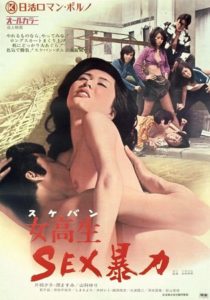
The film does away with the excesses shown by Toei; our protagonist and gang leader “Mona Lisa” Okyo* isn’t an extreme Jezebel along the lines of Reiko Ike and Miki Sugimoto’s characters- she’s very much a normal teenage girl with all the naïvety that comes along with that. She isn’t even particularly nasty; other than petty robbery and some fights with a rival girl gang she seems to be quite genial, is kind to her friends and even respects her friend’s grandmother. Her friends are equally likable and mundane with the brash and stuttering Eiko and the more meek Motoko representing the sort of outsiders you might expect to encounter in the average high school class. Gone are the superwomen armed with rifles, switchblades and even katanas. Instead, Okyo has a simple makeshift ring fitted with 2 razor blades- perfect for slashing faces and also concealing whilst at school.
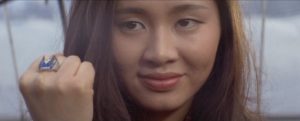
The plot of the film doesn’t focus on some grand yakuza conspiracy or shootouts with the police but alternatively focuses on the struggles faced by real-life delinquent youths- exploitation mainly. In a trend that seems to extend beyond borders and generations, Okyo and her small gang of delinquents end up being subtly manipulated and groomed by men. Okyo’s first steps down the rabbit hole of vice are led by an older ex-sukeban Yuki. Initially, Yuki seems like a friendly character for the girls- she is a somewhat successful woman and uses her comfortable life to boast to the girls of the benefits of the delinquent lifestyle. She encourages them to fight and steal and sells delinquency almost like a pyramid scheme- if they become successful enough and make enough money, they can gain power and influence and even become the leaders of the city-wide group of sukebans, almost like a yakuza underboss. Of course, she holds the keys to the kingdom and like any good pyramid scheme requires the girls to pay her a certain percentage of their earnings in order to gain influence.
However, all is not as it seems and Yuki is actually being manipulated by her gangster ex-boyfriend. She desires to marry her milquetoast salaryman colleague and live a normal boring life leaving her past mistakes behind, but her ex demands she pays him off in order to escape; all the money the girls, which the girls are giving to her, is actually being passed on to him. Being a sleazy gangster, he soon realises that these naïve girls can be easily lead and subsequently uses his influence to pimp them out.
Being a Roman Porno (Nikkatsu’s name for their softcore films), much of the film’s short 69-minute run time is filled with a series of sex scenes- whilst not particularly explicit, they run for a much longer time than would typically be shown in a regular film. The sexuality of the film is an odd mix- most early sex scenes start off as r*pe, yet the victim inexplicably ends up enjoying it after a few seconds, which even for 1973 standards seems a rather outdated power fantasy. This is in stark contrast, however, to a later scene where the girls are lured to an apartment and pimped out to the gangster along with various other men. This is shot very well and conveys the sheer horror of the experience through its visuals, depicting sickening neon lighting and silent audio except for echoing screams alongside the cries of the girls. It’s a very hard-to-watch scene and is the complete opposite of the other r*pe scenes which are shown in a less overtly destructive manner.
There is another scene in which the girls become drunk on whisky and have a little party amongst themselves; since this is technically a porno, they obviously end up naked on a bed together and engage in some Sapphic antics. The strange thing about this scene is how unpornographic it is. Usually, lesbian scenes in pink films are an excuse to crank up the sleaze factor, but in this case particularly, it seems to be less overtly sexual and more about showing some innocent experimentation between the girls. The usual male-gaze-focused norms of a lesbian sex scene are dropped for something far more genuine – the girls not focusing on looking sexy for the camera but instead acting like curious young women with much of the scene balancing passion between fits of giggles and silliness.
“Sukeban SEX Violence” presents one of the better depictions of youth compared to its contemporaries in the genre. Others focus on tongue-in-cheek silliness, violence, and exaggerated action, which effectively neuters the reality of being one of the characters in the film. By depicting their protagonists as larger-than-life characters, they largely ignore the emotions and experiences which led to their delinquency. This film on the other hand, however, gives a decent examination of Okyo and sukeban culture despite its short runtime. By the end of the film, the contrasting facets of the sukeban are exposed and rejected- on one hand, they seek to leave behind their life as a child and present themselves as an adult, often being exposed to the dark side of the adult world; on the other hand, the somewhat ridiculousness of this life is shown without filter. These girls generally do not act like adults and instead roleplay as the tough guys they have seen in films and TV- ultimately, is is that much different from a child’s make-believe games? Okyo comes to realise this and the violent finale plays out very differently than the typical pinky violence film.
Whilst revenge is still the primary motivator, it is clear from Okyo’s mental state that this act of catharsis is as much a rejection of the sukeban life as it is about gaining retribution for her r*pe and exploitation. Before moving onto the final showdown, we are treated to some absolutely gorgeous wide shots showing a surprising amount of skill and tact from director Nobuaki Shirai, despite it only being his second film in a career consisting entirely of pink films. Okyo stands alone staring across the water illuminated by the evening sun. The scene is entirely wordless but perfectly conveys her introspective thoughts and ensures the viewer feels at one with Okyo as she faces the twilight of her youth.

Overall “Sukeban SEX Violence” is a very unique, though overlooked, entry into the sukeban genre, offering a far more realistic and gritty exploration than Toei ever achieved. Perhaps inspired by this film, Toei would attempt a more grounded sukeban film with “Bankaku Rock” in September 1973 though it would prove pretty much indistinguishable compared to the rest of their output. That being said “Sukeban SEX Violence” would be the first major film to feature a proper look at high school sukeban antics, so perhaps the popular shoujo series of the 80’s such as “Sukeban Deka” owe some of their success to this film.
*Mona Lisa was a fashionable nickname at the time to call a beautiful woman, and Okyo is a shortened version of the name Kyoko- commonly used by delinquents. The juxtaposition of the two names gives a duality not dissimilar to “Marilyn Manson”.
More Film Reviews
Jungle Trap (2016) Film Review – Do You Know Where You Are?
Returning to the site of a hotel where the aboriginal people slaughtered a team of archaeologists, a new team set forth to find out the truth of what happened to…
Totally Killer (2023) Film Review – All Killer, No Filler in this Comedy-Horror Thriller
With that title, that font, and that poster, I don’t think there’s any doubt of where this film was going to go. Yes, it is indeed a tongue-in-cheek slasher based in…
The Price We Pay (2022) Film Review – We All Want To Make A Living Don’t We?
If you’re familiar with the name Ryuhei Kitamura, you are most likely familiar with either the beloved zombie action flick Versus (2000), the exquisite jidaigeki (period drama) Azumi (2003), the…
The Wheel of Heaven (2022) Film Review – “Put Your Tentacles and Testicles Together”
The Wheel of Heaven is a 2022 American sci-fi /dark comedy, written and directed by Joe Baddon with additional writing from Jason Kruppa. Joe is most known as the writer/director…
The Mildew from Planet Xonader (2017) Film Review – Beautifully Moist
The Mildew from Planet Xonader is a 2015 English-language Italian splatter horror film, written and directed by Giulio De Santi and Neil Meschino, with additional writing from Dave Fogerson and…
Flee The Light Film Review (2021) – Atmospheric, Effective Witchcraft Horror
Flee the Light, the first feature film from Toronto-based production company Mythic Trips, is an indie mystical horror-thriller about two sisters who find themselves in the crosshairs of an ancient…

Hi, I have a borderline obsession with Japanese showa-era culture with much of my free time spent either consuming or researching said culture. Apparently I’m now writing about it as well to share all the useless knowledge I have acquired after countless hours surfing the web and peeling through books and magazines.

